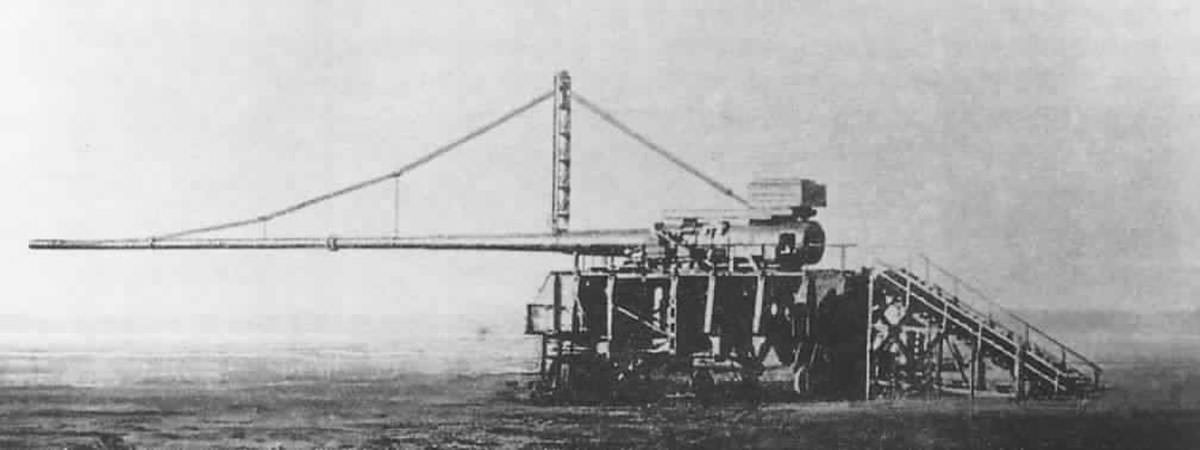Fought between 28 July 1914 to 11 November 1918, World War I was a global conflict primarily pitting the Central Powers of Germany, Austria-Hungary, the Ottoman Empire and Bulgaria against the Allies which was a coalition of many nations, most prominently the Great Britain, France, Russia, Japan and Italy. The challenge of war and the arms race that preceded WW1 brought forth numerous new technological advancements on the fighting field. The German U Boats or submarines were successful in posing a threat to the naval dominance of Britain changing naval strategies in times to come. WW1 marked the end of cavalry as an effective fighting unit with the use of poison gasses. Machine guns, modern artillery and the introduction of tanks heralded a new era of offensive war. But the most significant development was perhaps the strides taken in the development of air power. With most major countries developing their air force, the civilians would now always be in the line of fire in case of any future conflicts. Here are 10 interesting facts on weapons used during the First World War.
#1 U-BOATS WERE THE MOST EFFECTIVE WEAPONS OF WW1
German U-Boats were the most effective weapons of the First World War. It is strange that these submarines that could have potentially won Germany the war were also in a way responsible for its loss, as they invited the United States into the war. When WW1 started in 1914, the Germans had close to 30 U-Boats at their disposal. They managed to sink a total of 5 British Cruisers in the first 10 weeks of war. Germany built several different classes and types of U-Boats during World War 1 varying in length, speed, and crew capacity. The typical one was over 200 feet long; carried 10 to 20 torpedoes; could stay submerged for about 2 hours at a time; and had a crew of between 30 and 60 sailors.

#2 GERMAN U-BOATS SANK MORE THAN 6,000 SHIPS
Between 1914 and 1918, the U Boats were a source of great concern for the Allied Powers, and 334 more were built till the end of war. In the period they managed to sink 10 battleships, 18 cruisers and several smaller naval vessels. They further destroyed 5,708 merchant and fishing vessels for a total of 11,108,865 tons and the loss of about 15,000 sailors. 178 were lost by enemy action killing 515 German officers and 4894 enlisted men.
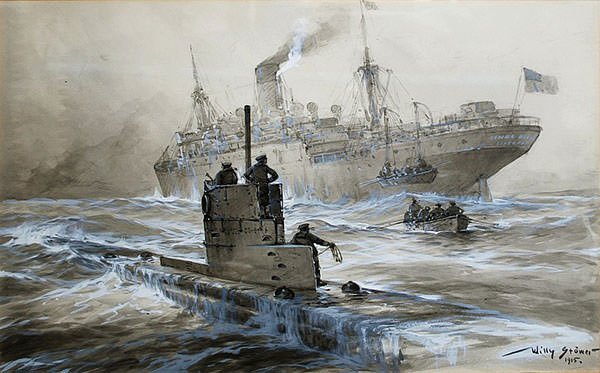
#3 TEAR GAS WAS THE FIRST CHEMICAL WEAPON USED IN WW1
The use of chemical warfare and poison gasses became another method to wage war as WW1 prolonged beyond the initial few months. The gas was delivered either by using the wind to carry the poisonous gas to the enemy’s front line or by placing the gas into artillery and aerial bombs; and firing them at the enemy’s front lines. In August 1914, the French made the first use of chemical weapons, when they fired the first tear gas grenades (xylyl bromide) against the Germans.
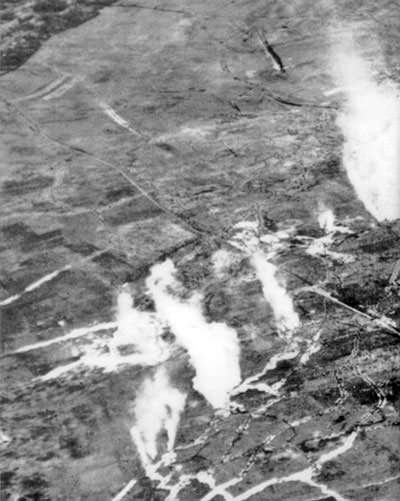
At the Battle of Bolimov, the Germans first used tear gas on a large scale against the Russians, firing 18,000 ammunition shells filled with xylyl bromide. The attack was however ineffective as most of the gas froze in the cold temperatures and was unable to vaporize. Tear gas was not considered a deadly weapon, and none of the combatants considered the use of it to be in conflict with the Hague Treaty of 1899. However its use opened the door to the use of more harmful gases.
#4 ABOUT 50 DIFFERENT POISONOUS GASES WERE USED DURING WW1
Chlorine was the first lethal deadly gas used on a large scale in April 1915 at Ypress, by the German military. It took more than 1,100 lives and caused panic among the enemy lines. By the end of World War I, scientists working for both sides had evaluated some 3,000 different chemicals for use as possible weapons. Around 50 of these chemicals were actually tried out on the battlefield. These included mustard gas, bromine, chloropicrin, nerve gas and the most successful phosgene, which accounted for the maximum number of deaths.

Around 36,600 tons of phosgene were manufactured during the war, out of a total of 190,000 tons for all chemical weapons. This made it second only to chlorine (93,800 tons) in the quantity manufactured. Counter measures such as gas masks were soon developed which controlled the damage caused by poisonous gasses. Overall, though the psychological factor of poison gas was formidable, it accounted for less than 1% of the total deaths in World War 1. Use of poison gas as a weapon was later prohibited by the Geneva Protocol in 1925. It was singed by most countries involved in the First World War.
#5 URINE SOAKED CLOTHS WERE AMONG THE FIRST GAS MASKS
The first major poison gas attack in WW1 took place on 22nd April 1915, when the Germans released 150 tons of chlorine gas near Ypres. The attack resulted in the death of about 1000 French soldiers who had no protection whatsoever against the attack. Men which had some knowledge of chemistry soon recognized the gas as chlorine from its powerful and unique smell that had spread for miles. They knew that simple measures could be taken to prevent against such attacks. These included simple solutions that dissolved or neutralized the gas. A permeable cloth was the necessity which had to be soaked in what was readily available around the trenches until more advanced solutions were provided by the establishment.
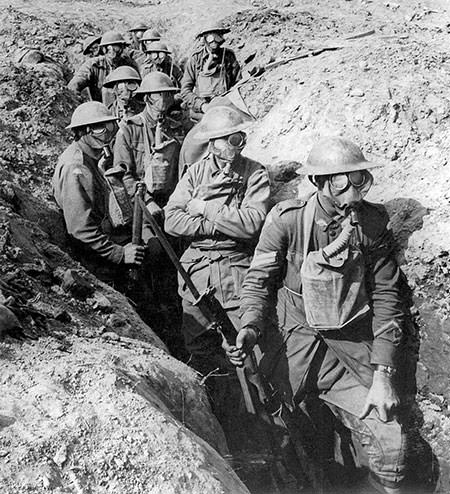
The first gas masks were thus permeable and easy to breathe through cloths soaked in water. Chemicals like sodium bicarbonate and sodium hyposulphate which were used in photography were also used. But the most unusual and pretty effective solution was soaking the cloth in urine. Two days later, when the Germans released more chlorine gas, a Canadian unit on the flanks was among the first reported to benefit from these urine soaked masks.
#6 TANKS WERE DEVELOPED TO BREAK THE DEADLOCK OF TRENCHES
The deadlock of trench warfare on the Western Front was among the major reason that led to the development of what would be the modern tank. They were developed separately and simultaneously by the British and the French with the aim of breaking the stalemate of trench warfare on the Western Front. The British developed the first prototype “Little Willie” under guidance of Major Walter Gordon Wilson who designed the gearbox and hull; and by William Tritton of William Foster and Co., who designed the track plates. Tanks were initially called “landships”. However, in an attempt to disguise them as water storage tanks rather than as weapons, the British decided to code name them “tanks”.
#7 TANKS WERE FIRST USED IN THE BATTLE OF THE SOMME
In January 1916 the prototype nicknamed “Mother” was adopted as the design for future tanks and became the precursor for the first Mark I models which were used at Somme. September 15, 1916 was the first time that tanks made their appearance in a battle at the Battle of the Somme. British tanks were initially categorized into “males” and “females”. Male tanks had naval cannon and machine guns while females carried only machine guns. The British produced about 2,600 tanks of various types during the war, the French built 3000 of Renault FT tanks among other less successful models, and pioneered the use of a full 360° rotation turret. The Germans on the other hand built only 20. The captured British Mark IVs formed the bulk of Germany’s tank forces during World War I.
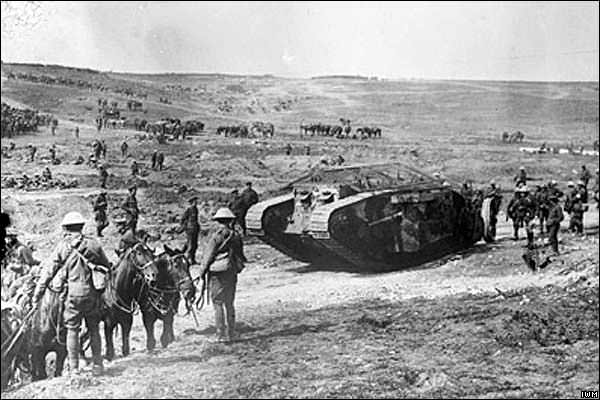
#8 BIG BERTHA WAS HIGHLY EFFECTIVE IN DESTROYING FORTIFICATIONS
Built by Germany’s largest arms manufacturer Krupp in secrecy, “Big Bertha” was named thus by German soldiers after it managed to effectively destroy Fort Lincoln in the siege of Liege, Belgium. Weighing 47 tons and capable of launching shells weighing more than 800 kg to a distance of 9 km; this howitzer was the most advanced mobile artillery used by any force at the time. Germany had two such weapons to begin with, which was later expanded to 12. They were built with the purpose of destroying fortifications and were highly effective on both the Eastern and Western fronts. They were however ineffective in breaking the deadlock at Verdun and were unable to penetrate the modernized French forts at Douaumont and Vaux.
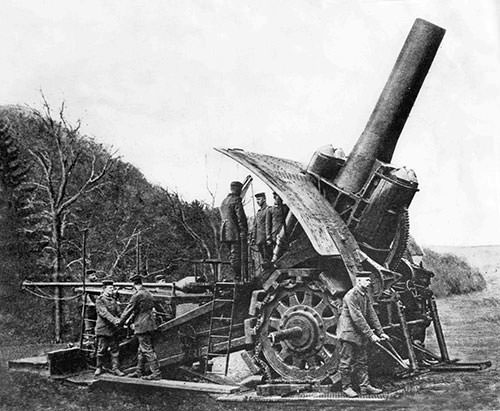
#9 PARIS GUNS WERE THE LARGEST PIECES OF ARTILLERY USED IN WW1
Big Berthas are sometimes incorrectly understood to be behind the Paris bombings of 1918. This was achieved by the Germans using the Paris Guns, also called the “Kaiser Wilhelm Geschütz” or the “Emperor William Gun”. Built with the aim of bombarding Paris, they were the largest pieces of artillery used during the war by barrel length, and were considered to be superguns. It had a barrel length of 34 meters, weighed 138 tons and could fire a 106 kg shell to a distance of up to approximately 130 km, which was unheard of at the time. The guns were used for intermittent firing on the city of Paris for a period of 140 days beginning in March, 1918. Designed more as psychological weapons to demoralize the French, the Paris Guns killed about 250 Parisians and destroyed many buildings.
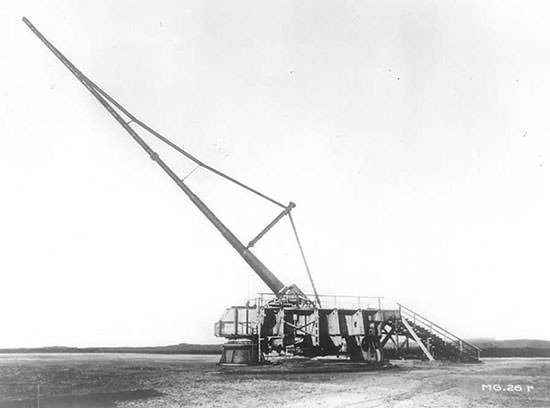
#10 THE TERM DOGFIGHT ORIGINATED DURING WWI
The term “dogfight” refers to aerial combat between two fighter aircraft, conducted at a close range. WWI was the first conflict that saw the extensive use of air power. This led to the development of the aviation industry by leaps and bounds. The term gained popularity in the Second World War but its origins can be traced back to the later years of WW1. The pilot had to turn off the plane’s engine from time to time so it would not stall when the plane turned quickly in the air. When a pilot restarted his engine mid-air, it sounded like dogs barking.
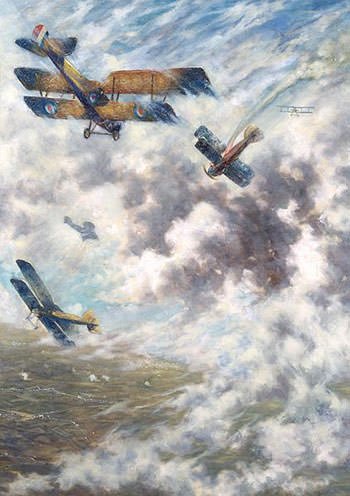
Most of these early fighter aircraft had two seats with a man sitting in the rear controlling the guns. Some gunners also carried grenades which they tried to drop onto enemy fliers below them. Fighting in the air was a different ballgame in WWI, when the fighter planes were in the initial years of development; and lacked speed and specialized weapons. The initial dogfights were extremely difficult requiring high human skill levels. The pilot had to dodge other enemy aircraft while coordinating with the gunner to get the enemy into his sights.
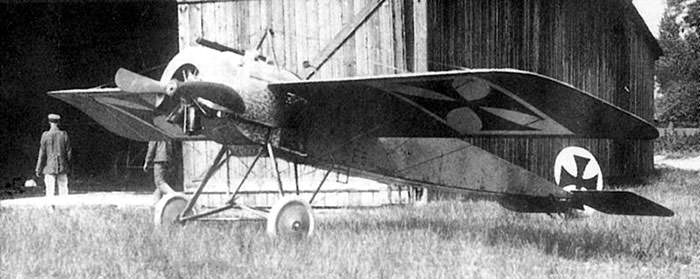
Early technological developments in fighter planes included safety strap systems that allowed the gunner to stand up and shoot all around; single seater aircraft with mounted carbines; deflector plates which diverted the direction of bullets that struck the propeller blades; and synchronized gear that finally allowed firing the machine gun through the propeller.

